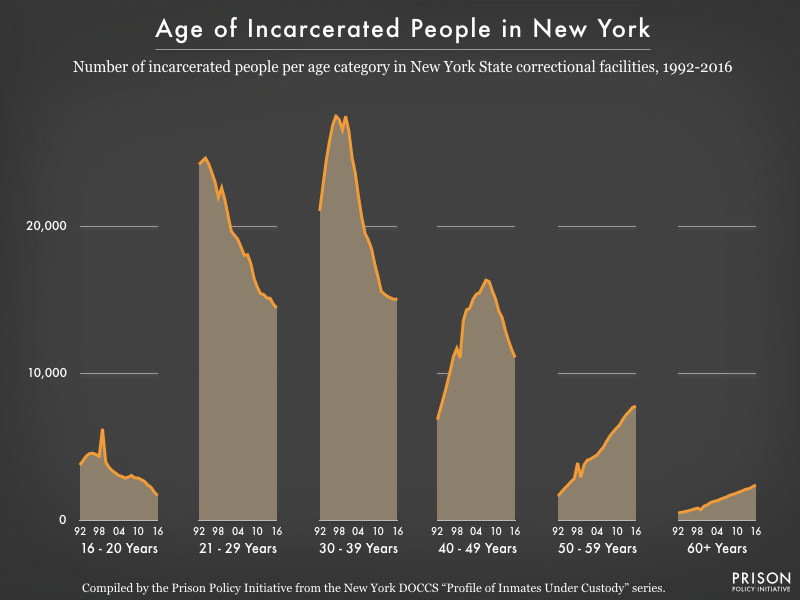New York State’s elderly prison boom: An update
Despite recent positive reforms, New York's elderly prison population continues to grow.
by Maddy Troilo, November 1, 2018
Several years ago, we reported on the elderly prison boom in New York; I thought it was time to update our analysis to examine the impact of recent reforms to the state’s Parole Board.
First, for context, a brief summary of New York’s parole reforms: After sustained effort by advocacy groups, the New York State Board of Parole revised the guidelines that shape their practices–long documented to be harmful to incarcerated people and their families–in September 2016. In June of that year, a campaign to change the composition of the Parole Board was successful, and Governor Cuomo appointed new Parole Commissioners with more diverse backgrounds and no history of abusing the position.
Advocates hoped these changes would increase the rate at which aging and elderly people in New York prisons are granted parole, and alleviate some of the “graying” of the state’s prisons. That happened, to a degree: this year, Release Aging People in Prison (RAPP) found that the Parole Board’s release rates have increased for people 50 or older from 24% to 40%. That change marks meaningful progress, but was it enough to reverse the growth in New York’s aging and elderly prison population?
Unfortunately, no. I found that even as the incarceration rate for all other age groups declines, the number of people age 50 and over incarcerated in New York continues to rise rapidly:
 Since 1992, the number of people age 50 and older incarcerated in New York state prisons has steadily increased, while the populations of every other age group have declined dramatically.
Since 1992, the number of people age 50 and older incarcerated in New York state prisons has steadily increased, while the populations of every other age group have declined dramatically.
As we showed in 2015, this rapid increase must be the result of decisions about release, because the number of aging and elderly people admitted to New York prisons only increased slightly. That’s certainly still the case, but I can’t update our graph of the commitment data because the New York Department of Corrections and Community Supervision hasn’t published any new data on people’s age at admission since 2014.
New York needs to do better; aging and elderly people shouldn’t be left behind as younger people continue to benefit from the state’s overall decline in incarceration. The state can begin by making these further changes:
- Seat more people on the board to combat understaffing and dismissing those who abuse and misuse their positions
- End the use of the “nature of the crime” as a factor in parole decisions
- Give more weight to people’s accomplishments while incarcerated
- Institute a meaningful presumption of release at first eligibility
- Acknowledge the fact that elderly people pose no substantial risk to public safety.
The new reforms are important progress, but much more needs to be done. For more information on the campaign to improve the New York Parole Board, see RAPP’s report New York State Parole Board: Failures in Staffing and Performance.



